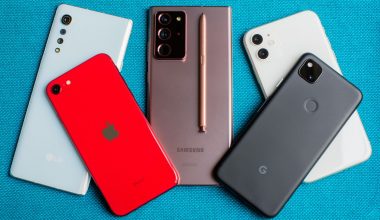Did your most recent campaign succeed or fail? Do your consumers promote you to their friends, or do they warn them to stay away? To find out and really move the needle when it comes to brand awareness, you’ll need to engage in brand monitoring. While many social media management tools include some form of brand listening, there are a few that make brand monitoring one of their key focus areas. Here are 10 of the best online brand monitoring tools for measuring your success over time.
What is Brand Monitoring?
Brand monitoring is the technique of tracking different channels to see where your brand is discussed. Understanding where and how people are talking about your brand can help you better understand how people perceive it and will allow you to collect vital feedback from your audience. You can also monitor prospective crises and respond to queries or criticism before they spiral out of control.
Why Brand Monitoring Is Important?
It’s critical for a brand to care about what its target audience thinks. You may not agree with some of the conversations you see surrounding your brand, but this provides you with an idea of how people feel about your brand and products in general. Your public perception and how you respond to public comments can have a significant impact on brand growth.
In fact, according to our latest poll of 250 corporate executives, 72% use social media as a source of data and insights to inform their company’s business choices.
Brand monitoring can affect your company in a number of ways, as listed below.
#1. Sentiment Analysis
You may better grasp the general emotion that people have toward your brand by using brand monitoring. A sentiment analysis examines the particular language used in comments about your brand and can tell you whether people are speaking positively, negatively, or neutrally about your brand.
This is a terrific method to read between the lines and see how people are reacting to certain pieces, campaigns, or your brand in general.
#2. Crisis and reputation management
Monitoring your brand can help you manage client complaints before they spiral out of control. Listening to reviews and criticism online and having a method for responding to and managing those concerns can boost audiences’ trust in your brand and demonstrate that you care about what customers are saying.
#3. Recognizing problems and making improvements
In addition to monitoring your brand’s reputation, it’s crucial to check for prospective comments that might assist you in identifying necessary modifications to your product or service. Make sure you have a robust method in place for receiving feedback from your audience. It’s also critical to have a system in place to route the online input to the appropriate departments within your organization that can make the modifications and improvements.
#4. Creating two-way communication
It is much easier to respond when you know where people are talking about your brand. Responding to reviews or comments in public shows your audience that you are actively listening to what they have to say.
It also demonstrates that you are available to answer queries and assist customers. When you miss the opportunity to respond to queries or criticism online, it may appear that your brand is unreachable or is not interested in feedback.
Recognize user-generated material User-generated content can be a valuable addition to your content strategy. You can discover who is sharing content about your brand by monitoring brand mentions. This is also a terrific method to locate new influencers to collaborate with who are true ambassadors of your brand and source new material for your social media channels.
Benefits of Brand Monitoring
Maintaining an ear to the ground at all touchpoints offers various advantages and will provide feedback and insight that is critical when it comes to establishing brand recognition, brand awareness, brand sentiment, and brand loyalty:
#1. Crisis management
Sometimes reputational crises emerge that require immediate attention – miss your window, and your brand sentiment may suffer in ways that are difficult to reverse.
Constant, real-time brand monitoring can help you spot these trending moments as they happen and handle them before they escalate.
#2. Addressing customer complaints
Brand monitoring is an excellent method for identifying and addressing client pain issues. If you pay attention to what your consumers are saying about you, you’ll understand which parts of the purchasing process are difficult for them.
Perhaps the checkout process is so complicated that people are tweeting about it. Perhaps your delivery tactics are eliciting feedback-form submissions. Good brand monitoring will alert you and suggest immediate measures as a result.
#3. Building customer relationships
Listening to what your customers (and potential consumers) are saying about you will help you identify opportunities to engage with them.
It could mean unearthing user-generated content (UGC) from brand-loyal advocates and fans that you can support and post on your channels, or it could mean cultivating a stronger sense of community by actively reacting to conversations about you rather than with you. The trick is to actively monitor conversations and mentions.
#4. Developing your reputation
Building your brand’s reputation is a gradual, continuing, and never-ending process, but you won’t know if you’re making progress unless you’re regularly monitoring sentiment online.
With a brand monitoring plan in place, you’ll be able to assign quantifiable numbers to things like brand reputation and follow its progress over time.
What To Monitor
Understanding what to monitor is just as critical as knowing where to focus your attention. Tracking the following will provide you a more complete picture of the reputation, feedback, and share of voice of your brand:
#1. Product names and brand mentions
The most obvious, but also most crucial, thing to listen for. Monitoring brand mentions can provide you with a comprehensive picture of every time your company is directly mentioned by customers or in the media.
Include product names in your brand monitoring to capture any mentions that do not necessarily involve your brand name, but make sure that you include alternative/incorrect spelling and phrasing in your criteria with both.
#2. Industrial jargon
When using brand monitoring to impact marketing campaigns or market research, it might be beneficial to look beyond your brand and products to the larger industry.
Monitoring industry-specific terminology and new trends is an excellent method to keep on top of your offering while also cross-referencing your standing and relevancy within your business.
#3. Competitors
Competition monitoring can help you assess how your results compare to the rest of the market.
Most brand monitoring solutions include some level of competitor benchmarking to assist you understand your share of voice and how your overall brand sentiment compares to your closest competitors.
#4. Sentiment
In general, sentiment analysis examines whether people perceive your brand favourably, negatively, or neutrally, however data can originate from a variety of sources.
Contemporary brand monitoring tools can go beyond typical surveys, including text parsing to detect sentiment or – as with Qualtrics Experience iD – natural language detection that includes contact center conversations. The easiest method to gain a comprehensive picture of sentiment is to combine data from as many sources as possible.
How To Choose The Best Brand Monitoring Tools
Ready to begin? We’ve provided a few simple ideas for picking the best brand monitoring tool for your needs…
#1. Establish your brand monitoring objectives.
The more data points you can measure, the better, but it’s always best to stay focused. Use a brand monitoring tool that focuses on social media if your initial objective is to determine the effectiveness of your most recent social media campaign.
If you want to compare yourself to your competition, you’ll need to be sure your platform is up to the task.
#2. Create a budget
Never pay for a brand monitoring platform or suite that is more expensive than it is worth to your company’s bottom line.
Determine how much you’re willing to spend – both on subscription fees and on in-house employee time – and compare pricing models accordingly.
#3. Choose something scalable.
As your brand expands, so will your brand monitoring goals, so search for brand monitoring tools that can scale with you.
Several provide scalable solutions that can be supplemented and expanded with more powerful tools, but some have limitations entrenched in a single type of brand monitoring. It’s a good idea to start with a roadmap in mind so you don’t end up with multiple platforms that are difficult to switch between.
Examples of Brand Monitoring Tools
These are a few brand monitoring tools to consider…
#1. Brand24
Brand24 is one of the most powerful brand monitoring tools, according to HubSpot.
The tool collects publicly available data from a variety of sources, such as:
- social media platforms (Facebook, Twitter, Instagram, YouTube, Twitch)
- blogs, forums, and review sites
- news sites
- podcasts
- newsletters
- all other publicly visible mentions on the web
Brand24 is the ideal combination of social listening and comprehensive brand surveillance.
Brand24 will provide you with a wealth of information about your brand, including how it is perceived online and where and what people are talking about it. User-friendly dashboard makes navigation a breeze.
Simply enter your brand name in the project creation wizard and click create to begin. The process of monitoring brand, hashtags, and more begins at that point!
Brand24 has a monthly price of $49 and a 14-day free trial!
#2. Google Alerts
Some free brand monitoring tools will perfectly suit your business needs, particularly if you are just starting out.
Google Alerts is a more simpler brand monitoring tool with benefits and drawbacks.
For starters, Google Alerts is a free tool.
It is also simple to use. Enter your email address and the keyword you wish to track across the web in the search bar. That’s all there is to it!
You’ll get an email every time someone searches for your keyword online.
GA aggregates online mentions of your predefined keyword.
The simplicity can be both a blessing and a curse.
You will not receive any advanced analytics sections, nor will you be able to set up dedicated notifications or generate reports.
Google Alerts does not monitor social media, rather it is a free brand monitoring tool.
#3. Brandwatch
Brandwatch is on the opposite end of the spectrum when it comes to brand monitoring tools, as it provides significant data analytics and business insight.
Yet, it is one of the most expensive brand monitoring tools on the market.
Let’s start with the good.
Brandwatch provides historical data as well as advanced machine learning algorithms.
The algorithms will slice and dice data for you to provide: the most accurate and insightful information about your audience; separate the data into relevant categories to assist you in creating the optimal customer persona.
Furthermore, Brandwatch provides a reporting platform with live data reports and real-time visualizations.
All subscriptions include social media brand monitoring. You can use the results of social listening to improve your online presence and discover crucial industry trends.
Brandwatch is a brand monitoring solution for large corporations and enterprises. Pricing is available upon request.
#4. Hootsuite
Hootsuite is primarily recognized as a social media management platform. You can schedule your social media postings with HootSuite.
But, you can also utilize Hootsuite as a brand monitoring tool to collect any online mentions of your brand.
Put up social media feeds to monitor conversations and keywords.
Hootsuite is still a social media management tool. This means that it will only collect mentions from social media channels like Instagram, Twitter, LinkedIn, and YouTube.
Hootsuite costs $19 per month.
#5. BuzzSumo
BuzzSumo is another tool that is not commonly associated with brand monitoring.
However, it provides brand monitoring services.
The brand monitoring tool includes various features that can assist you in locating all important mentions, such as:
- Keywords and brand notifications
- domain alerts — get notified whenever new content is published on a specific domain
- author alerts — track all content uploaded by a specific author
- link alerts — get notified whenever there is a new backlink to your website (excellent for SEO purposes)
- personalized dashboard real-time notifications filters to receive only the results you require
BuzzSumo starts at $99 per month.
#6. Social Media Mention
Brand monitoring tool Social Mention is free.
Is the interface recognizable?
I’m sure it does!
It appears to be pretty similar to the Google search engine.
Type the keyword you wish to track in the search bar. The source you want to investigate can then be defined. You can select among blogs, microblogs, bookmarks, photos, videos, and questions. Regrettably, it does not provide social media monitoring.
Reach sentiment analysis, top terms, top users, and top hashtag sources are just a few of the analytics provided by Social Mention that you may utilize to grow your business.
The primary disadvantage of Social Mention is that it does not provide data from social media networks. As a result, the results and analytics are limited and not always 100% correct.
#7. Native social media networks and analytics
Sometimes the simplest option is the best!
Many social media platforms include built-in analytics and alerting systems.
It’s by far one of the least expensive ways to track brand mentions, at least in terms of money.
You have to spend a lot of time inside the panel, manually analyzing the mentions, in order to receive the data you need from native analytics tools. That’s the best answer for individuals or small brands, but it’s ineffective for SME and large organizations.
#8. Ahrefs
Without mentioning the name of the brand you monitor, someone may link to your website.
Just like I did with Ahrefs a minute ago.
Ahrefs is an SEO tool with limited brand monitoring capabilities. Ahrefs, as a brand monitoring tool, will allow you to track backlinks to your website. It is the program of choice for link building attempts because of this.
You may track backlinks to your website in addition to looking for the best keywords and your website’s overall position in Google.
The link monitoring tool costs $99 each month.
#9. TweetDeck
Do you wish to concentrate entirely on Twitter? Twitter social media monitoring is a piece of cake!
Then check out TweetDeck.
TweetDeck allows you to create a Twitter dashboard that is tailored to your specific requirements.
The tool enables you to successfully participate in the debate by carefully following hashtags during events or live storms.
TweetDeck is a free brand monitoring tool.
#10. Keyhole
Keyhole will provide insights into your brand’s online performance.
The brand monitoring tool provides a rapid overview of the most significant social metrics, such as:
- overall impressions
- overall engagement
- total link clicks
Keyhole tracks the performance of keywords, URLs, hashtags, and @ brand mentions.
Keyhole provides real-time monitoring and reporting. You can use the brand monitoring tool to follow your company’s performance or to compare your results to those of your competitors.
Keyhole has a monthly price of $179.
Brand Monitoring vs. Social Monitoring
Brand monitoring includes social media as well as any other place where people are discussing your brand, in contrast to social media monitoring, which focuses solely on the social media coverage your brand receives. To collect audience insights, brand monitoring includes social listening and brand monitoring, as well as methods of tracking brand mentions on non-social media channels.
Conclusion
Brand monitoring is a great tool for marketers since it enables you to discover how your brand is regarded by people. It incorporates tactics that enable dynamic strategic planning and active brand reputation management. Brand monitoring may help your firm succeed by measuring a range of data, utilizing a media monitoring tool, and adopting results.
- MEDIA MONITORING: Top Media Monitoring Tools In 2023
- REMOTE MONITORING: What It Is, Application, and Jobs
- REPUTATION MANAGEMENT TOOLS: How It Works, Free and Best Tools for Reputation Management
- SOFTWARE MANAGEMENT SYSTEMS: Types, Features, and Examples
- MONITORING SALES PERFORMANCE: How to track Sales Performace (+Quick Tools)






